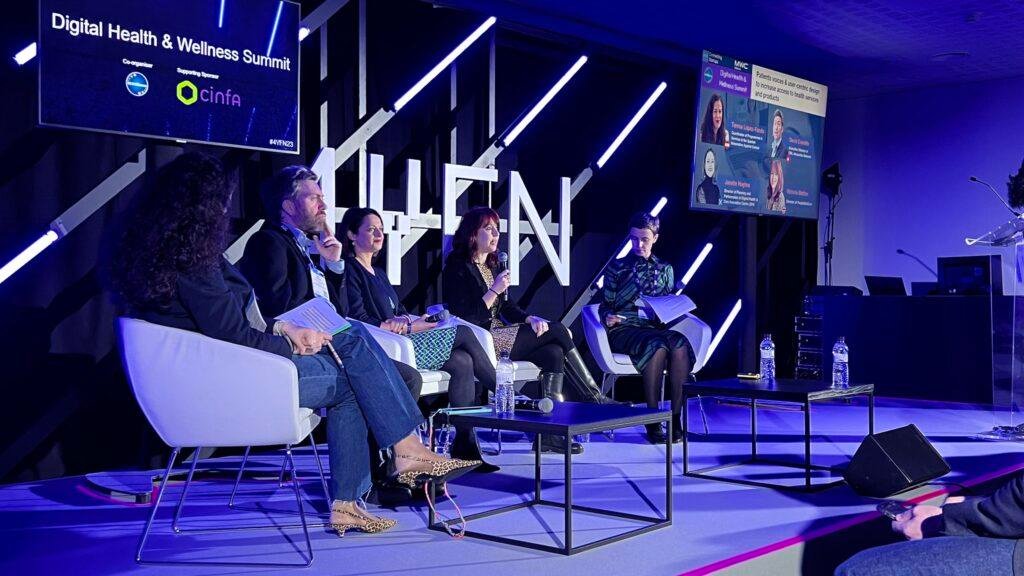Rustom Lawyer, Founder & CEO of Augnito expounds how the rapid development of Speech AI can benefit the contemporary, tech-savvy world—and the innovations to look out for this year. Accessibility, convenience, speed, and the ability to streamline workflows are just a few of the many utilities it will provide.
We continue to witness a rapidly accelerated digital revolution in the post-pandemic world. As automation takes center stage in most service-based industries, consumers have grown increasingly comfortable with our most intrinsic communication medium—the voice. Recent studies show that 69% of consumers prefer using conversational chatbots to get instant information or resolve queries. The Conversational AI market in the U.S. is expected to reach $18.4 billion by 2026.
Technologies like voice assistants not only provide a more efficient engagement interface but also are a cost-effective solution for several industries, including healthcare, insurance, telecommunications, and automotive. While artificial intelligence has become more mainstream, software with enhanced speech recognition capabilities remain limited. Development in this sector as well has been fast-tracked by demand. Speech AI provides unprecedented accuracy and efficiency. There are several reasons why the contemporary, tech-savvy world can benefit from it. Accessibility, convenience, speed, and the ability to streamline workflows are just a few.
So, here are five of the biggest trends in Voice AI in 2023:
- Voice Biometrics
The development of voice recognition technology and biometrics enhances the security of verification and authentication procedures. It will benefit the banks, healthcare providers, and insurance companies. The ability to determine an individual’s unique pitch, cadence, and dialect will be an effective tool in guarding against scams such as identity and data theft. Mobile payments via voice biometrics are also gaining momentum. Far more efficient and secure than typing in a password or pin, you can just read out a one-time password.
In healthcare, voice biomarkers are set to revolutionize the early detection and treatment of ailments in various medical specialties—from mental health to neurology. From snippets of the patient’s speech, the software can identify signs of depression or even initial symptoms of Parkinsonian disorders.
- Voice Based Chatbots
AI-based chatbots have been integral in integrating user experience in both the physical and digital worlds. The accessibility and interactivity of these systems are fueled by Natural Language Processing (NLP) technology. They use predictive analytics to understand user intent. Unlike the bots, with a set of pre-coded responses, new models are programmed to deliver a personalized customer experience. They even influence the perceptions or behavior of the customer favorably.
- Automatic Speech Recognition (ASR)
Deep learning-based ASR inevitably leads to better accuracy by eliminating human error. With speech-to-text or transcription interfaces, professionals can prioritize their most critical tasks. In healthcare, this innovation manifests itself in intuitive Voice AI solutions that help streamline clinical workflows and make healthcare intelligence securely accessible. The cloud-based speech recognition technology enables physicians to enter data accurately, anywhere, and from any device.
With the development of natural language processing and active learning systems, Automatic Speech Recognition (ASR) has come even closer to facilitating ‘real’ conversations between people and machine intelligence. It is particularly useful in the gaming industry. For example, this technology can blur the boundaries between the player and his in-game avatar. They can converse naturally with characters which also allows a more differentiated playing experience for each individual.
- Voice Cloning
Also known as voice replication technology, this process combines machine learning with neural networks to generate realistic human speech or customizable voices. High-powered text-to-speech platforms mimic brain function to process language, while deep learning capabilities help integrate nuances such as intonation, tone, and speed. Adding emotion to these computer-generated voices makes them indistinguishable from original human voices—resulting in an intriguing tool for advertisers, filmmakers, game developers, and other content creators.
- Optimizing SEO for Voice Search
Studies show that consumers will have spent approximately $19 billion on voice-enabled products by the end of 2022. If voice search platforms continue to grow, digital marketing will have to begin to adapt to a new medium. Impetus on SEO optimization will shift from text to voice. This will entail the addition of conversational terms and phrases to existing keywords to create ‘commands.’ Although some experts argue that voice searches are converted to text before being executed in any case, they fail to account for the fact that when conversing with a voice assistant, people tend to use more words. For example, instead of ‘Clinic near me’, they would probably say the whole sentence—’What are some of the best clinics in my area?’ Promotional strategies and websites will have to continue to be optimized accordingly.
About Augnito
Augnito is an advanced-AI-powered voice recognition solution, launched in 2020 to revolutionize clinical documetation in the global healthcare market. Augnito empowers medical professionals to streamline clinical workflows with cloud-based, AI speech recognition, enabling ergonomic data entry with 99% accuracy, anywhere, from any device. Scribetech, Augnito’s sister company, founded in 2001, is a pioneer in healthcare documentation software within the UK’s National Health Service and independent healthcare organizations internationally. Augnito is HIPAA, GDPR, ISO 27001, Cyber Essentials Plus and SOC2 certified. Augnito medical transcription software is currently deployed at more than 250 hospitals and health systems across 15 countries.
